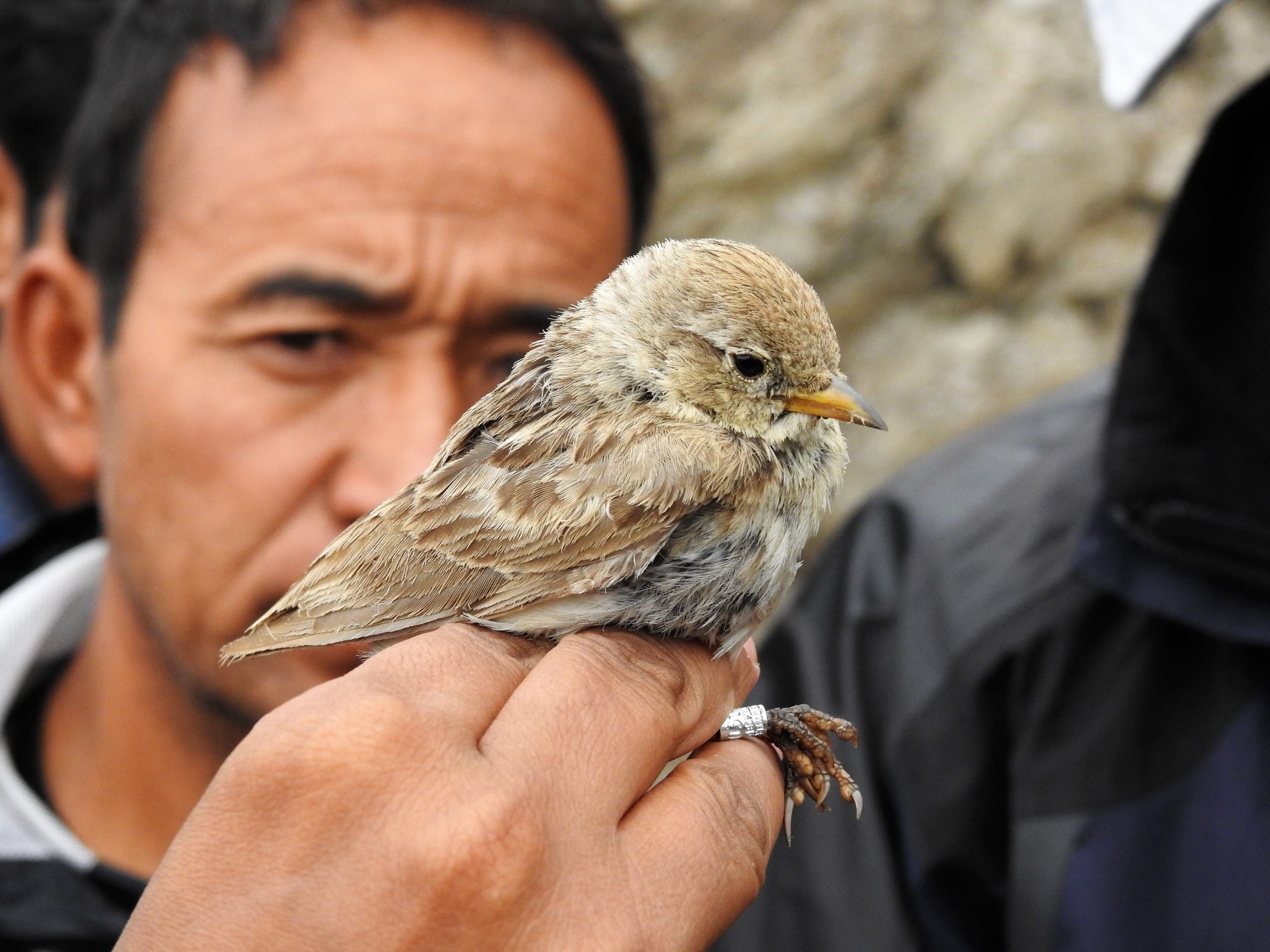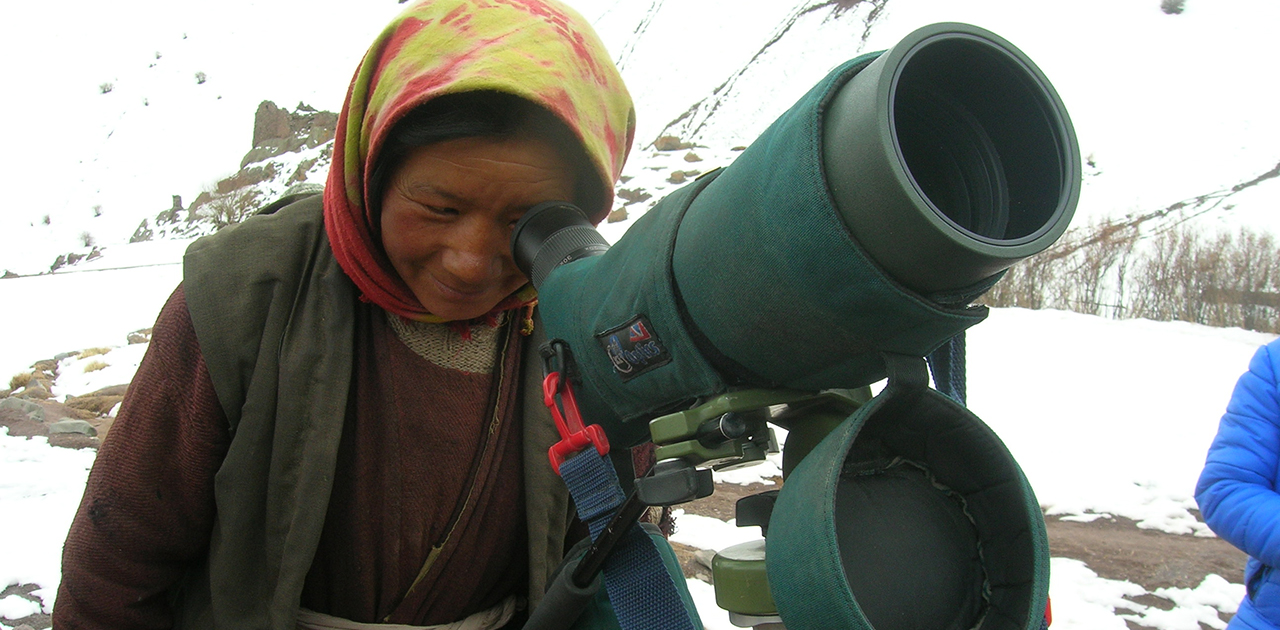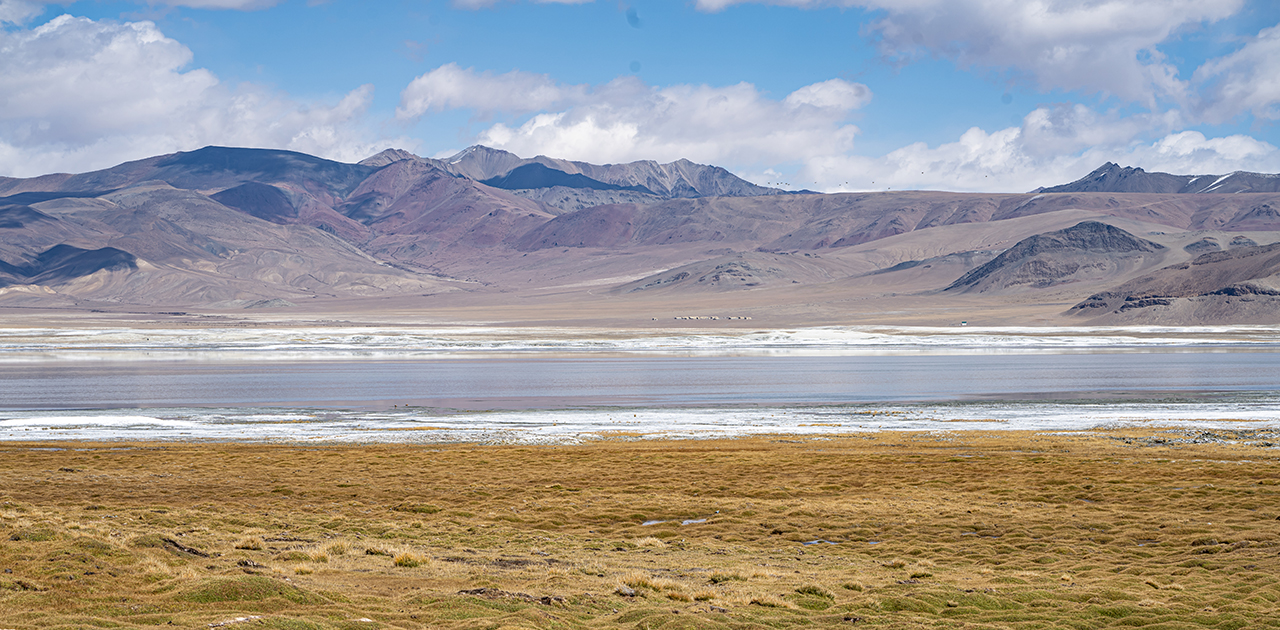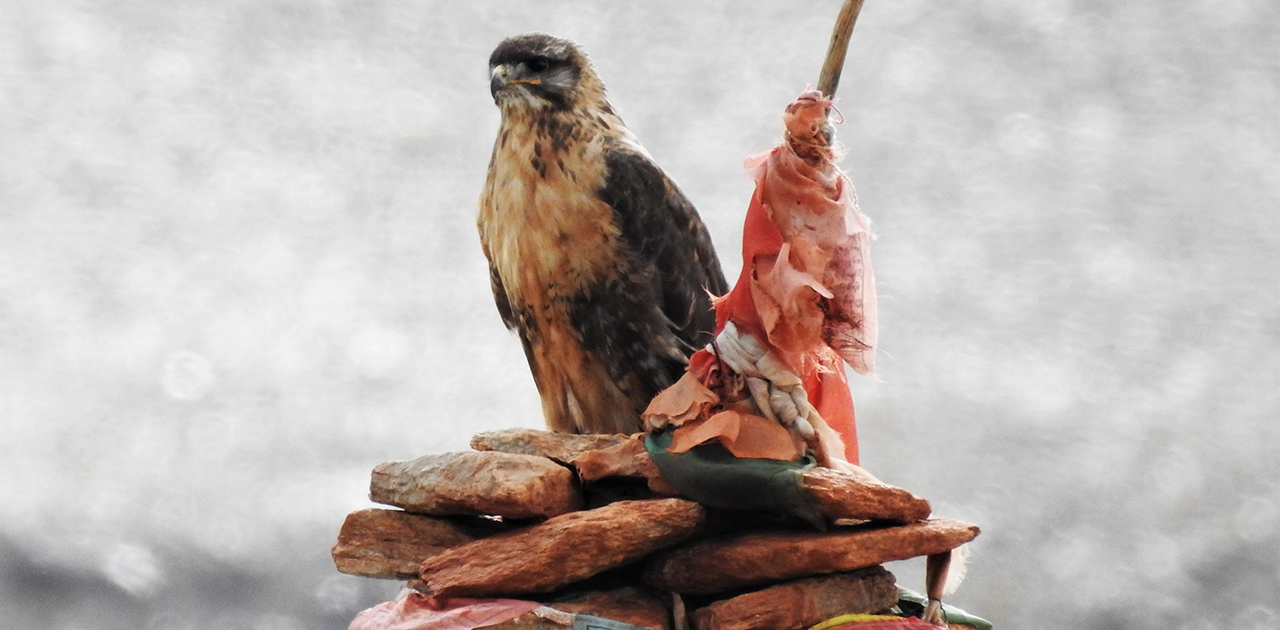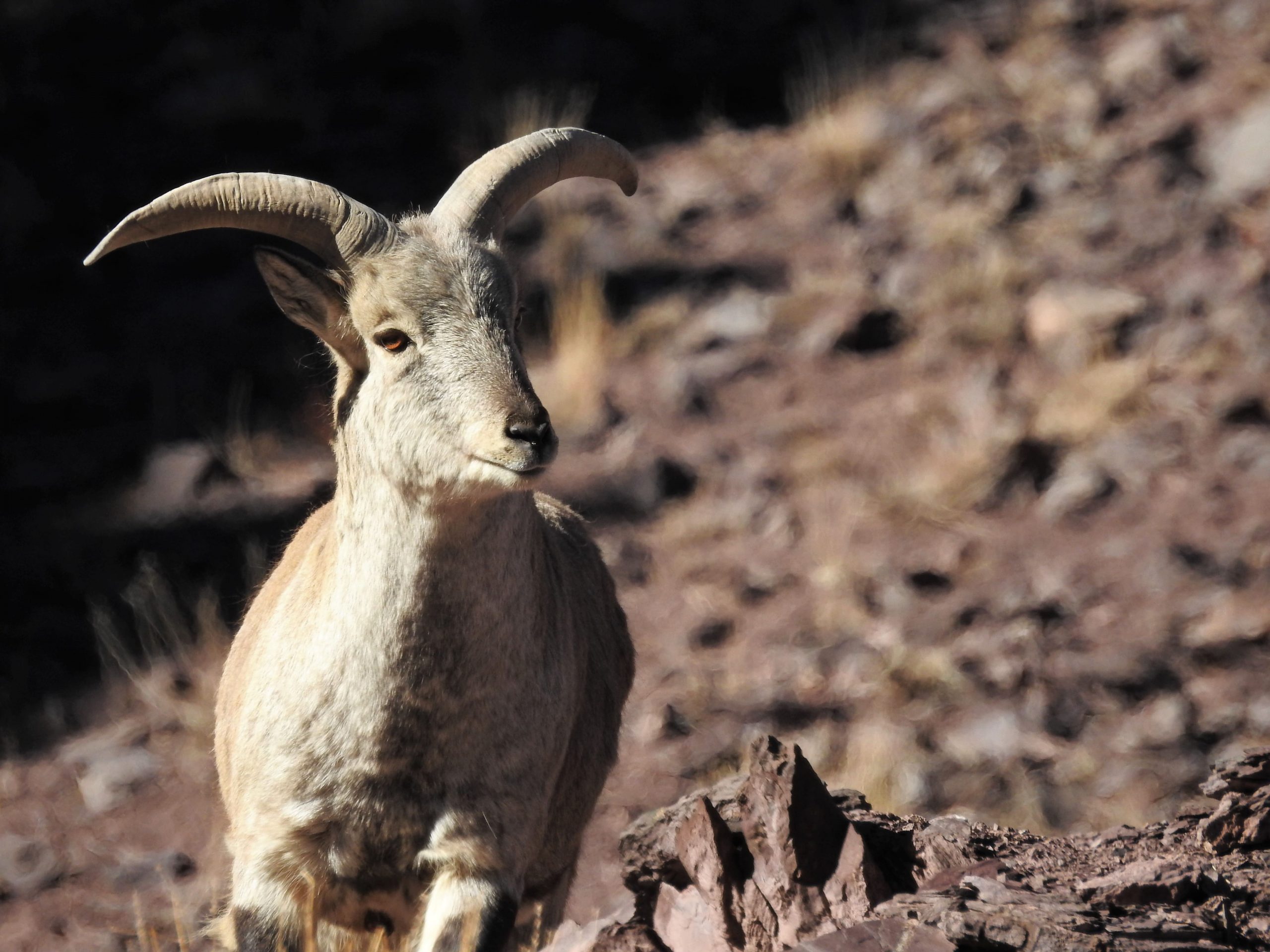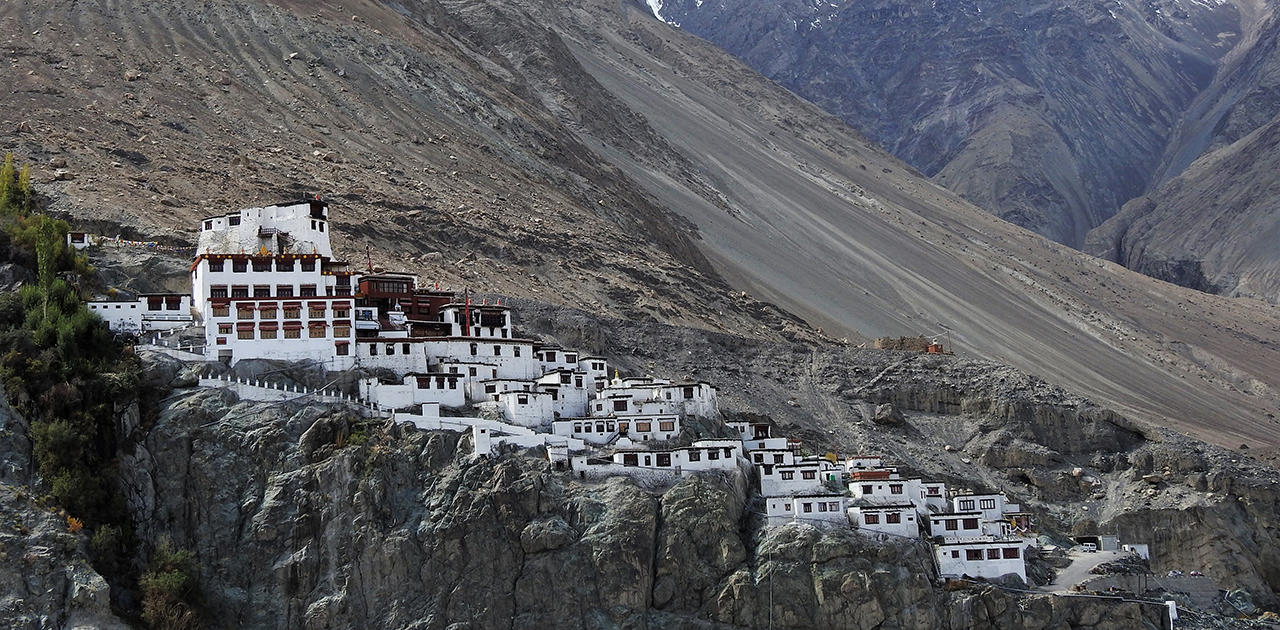Changthang (Ladakh)
The SECURE Himalaya project is being implemented in the Chanthang landscape, in Ladakh, which includes the Rong valley and the Gya-Meru region. It is a cold desert with a short summer and Arctic like winter. While the region is famous for the Changthangi goat, the source of the popular pashmina, it’s also well recognised for its wetlands which are home to many indigenous and migrating birds. The landscape consists mainly of pasturelands, which are a repository of forage that support a large number of livestock and wild ungulates in a resource-limited environment.
The local communities residing in the region are Changpas, who are traditionally nomadic pastoral and agro-pastoral communities. Their primary occupation is the rearing of pashmina goats (also known as ‘changra’), sheep (changluk) and yak for their wool and animal products. They grow barley and vegetables in a short growing season, as well as cater to the tourism industry.
Sites of high conservation value in this region are :
- Tsokar Wetland Complex (Ramsar site)
- Startsa phuk Tso
- Tso Moriri (Ramsar Site)
- Pangong Tso
- Yaya Tsor
- Chushul & Hanle Marshes
- The Indus River System.
- Changthang cold desert wildlife sanctuary ; a protected area

Project Progress : Ladakh
1. CONSERVING BIODIVERSITY
Snow leopard rescue centre and genetic lab established for rescue, rehabilitation and conduct scientific research on snow leopards and associated species.
Successful designation of the identified High Conservation Value Area of Tso Kar Wetland Complex as the 42nd Ramsar site in India.
Support provided to Ladakh Biodiversity Council to implement the Biological Diversity Act, 2002. This includes the constitution of Biodiversity Management Committees, Developing PBRs, Identifying BHSs and preparing the Ladakh SBSAP.
Areas of High conservation value identified in Tso Kar, Chushul and Hanle Marshes and Tso Moriri in Changthang landscape.
Wetland Health Cards and Wetland Brief Documents prepared for 23 High-altitude Wetlands of Changthang landscape, thereby generating invaluable data on the health of high-altitude wetlands and enabling effective planning for their conservation.
Medicinal Plant Conservation Areas identified
Integrated Management Plan prepared for the Key Biodiversity Area of Hanle Marshes, which enables effective long-term conservation and resource mobilization for the site.
Participatory Biodiversity Survey conducted in Changthang landscape of Ladakh with 17 frontline staff officials of Department of Wildlife Protection, Union Territory of Ladakh, and 43 community members (more than 50% were women) to assess the presence of important wildlife and bird ringing in the landscape


2. DIVERSIFYING LIVELIHOODS
2. DIVERSIFYING LIVELIHOODS

3. PREVENTING WILDLIFE CRIME


4. Building knowledge
4. Building knowledge

Stories From the Region
Pioneer in international film festivals and forum on environment and wildlife …
One of the key objectives of the project is mainstreaming multi-stakeholder …
As climate change forces snow leopards to lower altitudes, they encounter new threats, …
Ladakh
A cold desert in the northernmost part of India, the Changthang plateau, in Ladakh, is an awe-inspiring landscape of rolling hills, wetlands, lakes and river-basins. The landscape is home to a variety of rare endemic and migratory birds as well as remarkable animals, including the majestic snow leopards…
Gallery
human life of the Trans and Greater Himalayas

Key Findings from the landscape

Hanle - Integrated Managment Plan
Hanle Wetland Complex located in the Changthang Cold Desert Wildlife Sanctuary comprises of four key wetlands (Jung Demo, Raar, Chukil and Shado Bug) which range between 47ha to 224ha in area at an elevation range of 4000masl to 4400masl.
Download »
Participatory Integrated Landscape Level Management Strategy and Plans in the Changthang Landscape
IORA Ecological Solutions Pvt. Ltd. would like to thank everyone who has supported the preparation of the report for the Participatory Integrated Landscape Level Management Strategy and Plans in Changthang Landscape.
Download »
SECURE Himalaya Baseline study on state of Financial Inclusion
Implemented by the Ministry of Environment, Forest and Climate Change (MoEFCC), Government of India and UNDP, SECURE Himalaya (Securing livelihoods, conservation, sustainable use and restoration of high range Himalayan ecosystems) is an initiative which combines livelihoods
Download »






